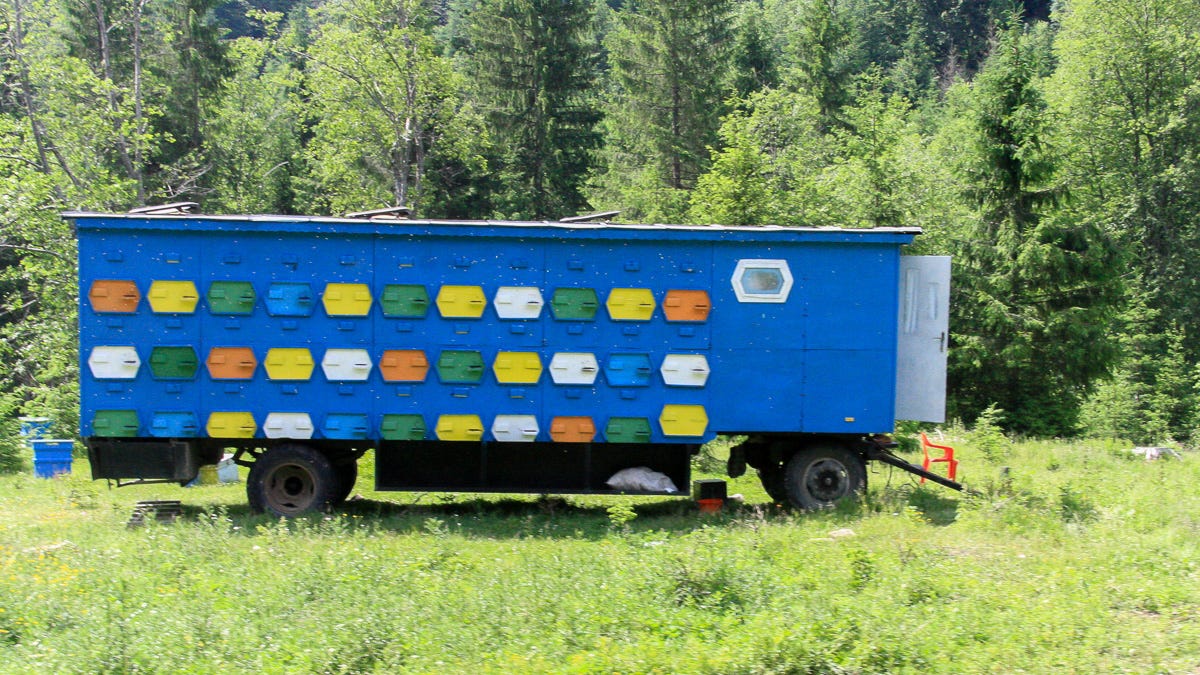Global Climate Impacts: Where Is Climate Change Affecting the World This Week?
This week, climate change–driven conditions — from extreme heat to water shortages — are unfolding on every continent
This week’s Global Climate Dispatch is looking at the impacts of climate change across 3 continents. In India, eastern and southeastern Europe, and central South America, Climate Central’s Climate Shift Index1 indicates that temperatures will reach 30–40°C (2–12°C above normal for this time of year) and are made 3–5 times more likely by human-caused climate change. The highest anomalies are forecast to impact Ukraine and Romania, where heat waves pose a threat to the economy. There, the conflict has itself become a source of emissions, and beekeepers in both countries are dealing with their poorest spring honey yields in years. Across the Amazon, record-low river levels and warmer waters threaten river dolphins, while in India, people experiencing homelessness face extreme heat and coconut farmers see sharp drops in harvests as whitefly outbreaks spread.
Need to read this in a language other than English? Try OpenL (up to 1,500 characters) or Google Translate—both offer free translations into 100+ languages.
India, Sri Lanka
Extreme heat, erratic rainfall, and increased humidity are impacting coconut yields in Tamil Nadu — Since 2019, farmers in the Coimbatore district have seen coconut yields plummet, with trees that once produced 150 to 200 coconuts a year now producing only 20 to 30. The primary cause? A spike in whitefly infestations, fueled by shifting climate conditions. These tiny insects attach to the undersides of coconut leaves, drain away nutrients, and leave behind a dark film that interferes with the tree’s ability to absorb sunlight. As a result, the trees grow weaker and produce fewer, lower-quality coconuts. Other pests, like black-headed caterpillars, are also becoming more common in this warming, unstable climate. On top of all that, intense heat and falling groundwater levels are making it harder for farmers to keep their trees properly watered; a mature coconut palm requires roughly 80 L daily. Without enough water, coconuts drop early or dry out before they mature.
Coconuts are deeply woven into Indian culture and daily life, especially in coastal regions that produce around three-quarters of global output. Known as Shrifal — the fruit of prosperity — or kalpavriksha in Sanskrit, meaning “the tree that provides the essentials of life,” every part of the coconut tree plays a role, from cooking and religious rituals to traditional medicine, cosmetics, and pharmaceutical development.
People facing homelessness in India’s shelters are among the most vulnerable to climate change — For people already experiencing homelessness in Bengaluru, climate change is making an already hard life even harder. Many shelters lack basic protection from extreme temperatures, with metal walls that trap the summer heat inside and provide no warmth in the winter, while leaky roofs and windows leave residents vulnerable to storms and flooding. Water is often unavailable; some shelters have no taps for running water at all. Residents have to carry heavy buckets from a borewell to the bathroom, which can be a physically demanding task, especially for older women. Other shelters rely on a nearby government office’s water supply, but that means that on government holidays, when the office is closed, the water stops entirely. Menstruating women and children are forced to ration whatever water they stored the day before. Electricity is also unreliable, with some shelters lacking a direct connection to the grid and instead drawing power from shared poles that frequently fail. Climate change doesn’t just make homelessness harder to live through. In many cases, it causes it — families fleeing drought, crop failure, or other climate disasters are ending up in these shelters, only to face a different version of the same crisis.
The safety of rice is increasingly at risk under a warming, carbon dioxide-rich climate — A decade-long study released earlier this year found that rising temperatures and higher carbon dioxide levels are increasing the amount of toxic inorganic arsenic that rice absorbs from flooded paddy fields. These fields create low-oxygen environments that release arsenic from soil and groundwater, which rice plants take in through the same channels they use to absorb nutrients. The arsenic travels from root to grain and can stay intact after milling or cooking. Inorganic arsenic is a Group 1 carcinogen and is linked to lung cancer, bladder cancer, heart disease, diabetes, and developmental issues in children. And because rice is eaten daily in India, the risk of long-term exposure is especially high. In many southern states, rice makes up more than 90% of rural cereal consumption and is often eaten two to three times per day. It’s estimated that the current average daily exposure to the carcinogen is just over 1.5 micrograms per kilogram of body weight in India. Projections show that in a hotter climate with elevated carbon dioxide, this will increase to more than 2.2 micrograms.
More frequent days with extreme heat may increase migraine occurrences — In Sri Lanka, health officials are linking current high temperatures and humid conditions to a spike in migraine cases over the past few weeks. Migraines aren’t just a simple headache. They can last for days, and often occur with nausea and vomiting, along with noise and light sensitivity. Research shows that people with migraines (including a co-author of this blog!) are more sensitive to heat — even outside active episodes. This heightened sensitivity, called interictal sensitisation, means their pain thresholds are lower than in people without migraines, especially when exposed to thermal triggers. In excessive heat, they can become more prone to migraine episodes.

Romania, Moldova, Ukraine, Russia
Heat waves pose an economic threat to Romania — A recent report from Allianz Research estimates that Romania could lose more than half a percentage point of its GDP in 2025 due to extreme heat. The country has already experienced more than 23 days above 32°C since May, which is a temperature threshold associated with drops in productivity and an increase in payroll costs by nearly 1%. High temperatures make it harder for people to perform physical tasks. The body has to stay cool, which can lead to exhaustion, slower movements, dehydration, and heatstroke. To cope, workers often reduce their hours, take longer breaks, or avoid physically demanding jobs altogether. These effects hit hardest in sectors like construction, agriculture, and manufacturing, where work often happens outdoors or in poorly ventilated spaces. This leads to higher costs and lower output for employers, leading to a decline in overall productivity at the national level.
The war in Ukraine is leaving its mark on the atmosphere — From the start of the full-scale invasion to early 2024, military operations released more than 180 million tons of carbon dioxide equivalent emissions, according to the Ministry of Environmental Protection. Over the same two-year period, the environmental toll has been estimated at over $33 billion. By early 2025, the amount of emissions was up to 230 million tons. These emissions come from a wide range of wartime activity, from fuel burned in tanks and aircraft to the destruction of infrastructure and the displacement of civilians. International air travel has also contributed, as flights reroute around closed airspace, increasing fuel consumption. The impact of war stretches beyond destroyed cities and lives lost. Military operations release greenhouse gases that linger in the atmosphere and have a global impact.
Years of fighting have also weakened the region’s defenses against dust storms. In southern Ukraine, long bands of trees were planted across the region during the 1960s to stabilize the soil, trap moisture, and reduce wind speeds to protect farms and villages from dust storms. For decades, they were successful. But many of these forest belts have been damaged or destroyed in the fighting, just as hotter, drier, and windier conditions return. Without those buffers, the risk of dust storms is rising.
At the same time, the war is contributing to the rise in wildfires across the country. In 2024, Ukraine experienced its worst wildfire season in more than 30 years, with nearly 965,000 hectares burned — more than double the area lost to fire across all EU countries combined. Artillery strikes and falling shells ignited many of the fires, especially along the front lines where damaged forests provided plenty of fuel, while land mines across the forests can make it impossible for firefighters to get the flames under control. Climate change is raising temperatures and further drying out the landscape, creating conditions that allow these fires to spread faster and burn more intensely.
This week, much of Ukraine is under extreme risk of fire due to little precipitation, variable winds, and high daytime temperatures.
Ukraine’s honey harvest is experiencing its worst spring yields in years — Beekeepers across Ukraine are reporting significant losses in their honey output. In some places, there was almost no harvest at all. Many beekeepers had to feed their bees just to keep the colonies alive. The failures stem from a mix of weather and environmental stress. April 2024 was the third warmest April in Kyiv in over 140 years, and summer 2024 brought persistent heat and below-average rainfall that also stressed grain crops across Ukraine and Russia. The drought left soil moisture low heading into 2025, and there were no spring floods to recharge the ground. As of early 2025, central and southern Ukraine still have very low groundwater levels. Late spring frosts in areas such as Cherkasy froze acacia blossoms before they could open. When acacia finally bloomed, intense rainstorms hit several areas, washing out the nectar and narrowing the bees’ foraging window. On top of that, many hives lost bees over the winter, struggled with early spring conditions, were poisoned by pesticides, and faced further losses due to the ongoing war.
A similar situation was also noted in Romania last year. Nearly half of the country’s honey production was lost in 2024, with acacia yields down by as much as 70% in some regions. Sunflower and linden honey production also dropped sharply due to excessive temperatures. The president of Romania’s beekeeping association said extreme weather made this one of the hardest years for beekeepers, with climate change driving conditions that stressed bee colonies and reduced harvests. Beekeepers also reported behavioral changes in their hives — the heat made bees more irritable and prone to attack, compounding the difficulty of managing already vulnerable colonies.
A new island has appeared in the Caspian Sea due to shrinking water levels — The landmass, located southwest of Maly Zhemchuzhny, was first noticed in satellite imagery last year and has continued to expand as water levels kept declining into the start of 2024. Scientists linked the emergence of the island to warmer temperatures and reduced river inflows, which have increased evaporation and caused the sea to shrink. Changes in Earth’s crust may have also contributed, and although this isn’t the first time temporary land formations have been revealed by fluctuating water levels, the current drop is likely to continue. In recent years, the Caspian Sea has been losing as much as 30 centimeters of water annually.

Brazil, Bolivia, Peru
Pink river dolphins in the Amazon are increasingly at risk with shrinking water levels — In late 2023, more than 200 pink and grey river dolphins were found dead in Lake Tefé, Brazil, after an intense drought pushed water temperatures above 40°C — over 10°C hotter than normal — and left large areas of the lake dangerously shallow. Thousands of other fish also died. The drought, made worse by El Niño and climate change, was the worst on record in the Amazon. River levels dropped so low that dolphins became trapped in overheated, oxygen-poor pools. These dolphins, which are already endangered and slow to reproduce, are especially sensitive to heat and changes in their aquatic environment.
Low water levels continue to disrupt life in the Amazon. In late June, researchers in Santa Cruz, Bolivia, rescued 27 pink river dolphins after dry conditions and reduced river inflow caused parts of the river system to fragment into disconnected pools, leaving the juveniles and newborns trapped. Some of the adults were fitted with identification chips for health monitoring, as these freshwater dolphins remain endangered and increasingly vulnerable to habitat disruption from human activity.
Glacial retreat is polluting water that Andean villages rely on — In Peru, more than 2,000 Andean glaciers have lost over half their surface area in the last 50 years, with the pace of retreat accelerating due to human-caused climate change. Some glaciers are retreating by more than 16 meters per year. As the glaciers melt, they expose rock beneath, which contains heavy metals and pollutants like zinc, copper, and lead. Once this exposed rock interacts with water, either from rain or snowmelt, it oxidizes and releases these contaminants into mountain streams and rivers. That runoff is now threatening the water security of high-altitude communities. In Coyllur, a village in the Andes, residents rely entirely on the Quai river that runs down the mountain for drinking, bathing, and cooking. But that water is increasingly polluted, leaving several locals feeling sick as they have no alternative water source. Local doctors have observed a rise in health issues, including kidney and gastric conditions, anemia, parasitic infections, and elevated rates of cancer diagnoses, including breast, uterine, and stomach cancers.
While pollution threatens the quality of water in many high-mountain communities, flooding is also an intensifying concern. A high-profile climate lawsuit tied to this threat was dismissed in May. It was brought by a Peruvian farmer and mountain guide from Huaraz, who argued that German utility RWE’s emissions were a civil nuisance and had contributed to the melting of glaciers above his town, increasing the flood risk from Lake Palcacocha, a nearby glacial lake. RWE is estimated to be responsible for roughly 0.4% of global industrial-era emissions, and the farmer sought around $17,000 to help fund local flood defenses. The court ultimately ruled that the specific risk to his property wasn’t great enough to justify an investigation into the causal link between RWE’s pollution and the threat to the plaintiff’s property. However, it didn’t reject the idea that major emitters can be held accountable for climate damages.

Amazon River pink dolphin, fauna by IISD/ENB | Angeles Estrada via flickr (CC BY-NC-SA 2.0)
We Would Love to Hear From You!
Have you noticed the impacts of extreme heat in your community? Whether it's unusual weather patterns or disruptions in local ecosystems, we'd love to hear your thoughts. Share your experiences or observations in the comments below and join the conversation!
Your Feedback Matters
At Global Climate Dispatch, we strive to provide accurate and equitable coverage of climate change and its impacts. If you come across anything that seems inaccurate or concerning, please don’t hesitate to let us know. Your insights help us ensure that the information we share remains truthful, balanced, and relevant to all.
Locations featured are chosen based on data from Climate Central's Climate Shift Index map. Some graphics used may also come from Climate Central's Climate Shift Index map. Any original analyses contained in this blog or any views expressed in this blog, unless otherwise noted, are solely the expression of its authors and are unaffiliated with Climate Central or any other entity or person referenced within.




